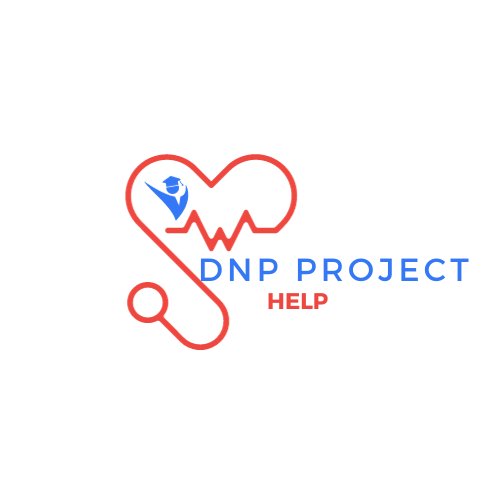
Advance Care Planning Data Analysis Assignment Example
- Transition from exploratory analyses to outcome analyses summary: In this assignment, please do not include results from exploratory analyses such as tests of normality and histograms.
- Purpose: The purpose of this assignment is to demonstrate your ability to communicate your DNP scholarly project results using narrative text and graphical displays.
- Directions: This assignment should be broken up into the following sections:
a. Narrative description of sample including how many participants were enrolled, how many received the intervention (if applicable), and how many completed the project. Use appropriate descriptive statistics (i.e. mean and standard deviation for continuous variables in larger sample sizes, median and interquartile range for continuous variables in smaller sample sizes, or counts and frequencies for categorical variables) to provide a narrative description of baseline sample characteristics (i.e. sociodemographic, health, and other baseline characteristics) for the group(s) who participated in your scholarly project. If you have more than one group (e.g. intervention and comparison group or different pre-test and post-test samples), state whether your groups are statically different at baseline and if so, what characteristics they differ on. If you have more than one sample (e.g. you have samples of nurses and patients) make sure to provide a narrative summary for each sample. This section should summarize your table(s) of baseline characteristics (section 3b)
b. Table 1 of baseline sample characteristics for the group(s) who participated in your project. If you have two or more groups in your project (e.g. intervention and comparison group or different pre-test and post-test samples) you should determine if there are statistical differences between the groups’ characteristics at baseline (i.e. include a column for p-value in your table). If you have more than one sample (e.g. you have samples of nurses and patients) make sure to provide a baseline characteristics table for each sample.
c. Findings for Aim 1: For aim 1 include descriptive statistics (i.e. mean and standard deviation, median and interquartile range, or counts and frequencies) for the outcome at each timepoint and difference between timepoints, if applicable. If your outcome was assessed by a survey make sure to interpret the mean or median in light of whether higher or lower scores indicate a better outcome. Then provide results from statistical analyses (if conducted) and a brief interpretation of statistical tests (quantitative) or exemplar quotes for key themes (qualitative). Use stand-alone graphs and/or tables, for quantitative and/or qualitative analyses, to complement the written narrative section.
d. Findings for Aim 2: For aim 2 include descriptive statistics (i.e. mean and standard deviation, median and interquartile range, or counts and frequencies) for the outcome at each timepoint and difference between timepoints, if applicable. If your outcome was assessed by a survey make sure to interpret the mean or median in light of whether higher or lower scores indicate a better outcome. Then provide results from statistical analyses (if conducted) and a brief Outcomes Data Analyses Summary interpretation of statistical tests (quantitative) or exemplar quotes for key themes (qualitative). Use stand-alone graphs and/or tables, for quantitative and/or qualitative analyses, to complement the written narrative section.
e. Findings for Aim 3: For aim 3 include descriptive statistics (i.e. mean and standard deviation, median and interquartile range, or counts and frequencies) for the outcome at each timepoint and difference between timepoints, if applicable. If your outcome was assessed by a survey make sure to interpret the mean or median in light of whether higher or lower scores indicate a better outcome. Then provide results from statistical analyses (if conducted) and a brief interpretation of statistical tests (quantitative) or exemplar quotes for key themes (qualitative). Use stand-alone graphs and/or tables, for quantitative and/or qualitative analyses, to complement the written narrative section. If you do not have a third aim then neglect this section. If one of your aims is to solely develop an intervention then you do not need to present findings for that aim as you are not conducting descriptive or inferential statistics to evaluate it. You can just describe the developed intervention in the methods section.
f. If your sample size is so small you can only conduct descriptive statistics, one option in addition to providing median (IQR) or counts and frequencies is to highlight items (if results are from survey) that were of particular interest to you or appeared to be much higher or lower than other responses.
- Conclusions: Briefly synthesize key results (do NOT simply repeat results from results section), identify project limitations and strengths, identify limitations specific to the statistical analyses, and implications of findings moving forward. In hindsight, what would you change about what you measured (i.e. what variables you measured or how you measured them) to give you a better understanding of change resulting from the intervention? Regardless of statistical significance, explain whether or not your findings were clinically significant. For example, you found a statistically significant improvement in quality of life using the KCCQ among patients with heart failure. However, this result is not clinically significant as the improvement was less than 5 points and an improvement of 5 points is the validated clinically meaningful improvement in quality of life for the KCCO. This section should be no longer than one to two paragraphs. In your final DNP scholarly project report many of these (synthesis of results, limitations and strengths) will be addressed in your discussion section as well in more detail.
| Outcomes Data Analyses Summary | |||||
| Criteria | Ratings | Pts | |||
| Project Purpose and Aims | 20 to >18.0 pts Exceptional The project purpose statement and aims are clearly listed. | 18 to >16.0 pts Satisfactory The project purpose statement and aims are present but may not be stated clearly. | 16 to >14.0 pts Needs Improvement Either the project purpose statement or aims are missing. | 14 to >0 pts Unsatisfactory The purpose statement and aims are not included. | 20 pts |
| Methods | 20 to >18.0 pts Exceptional The project design, setting, sampling method, sample, intervention, measurement tools, project procedures, data collection process, and analytic methods are described in sufficient detail to allow replication of the project. | 18 to >16.0 pts Satisfactory Some of the elements of project design, setting, sampling method, sample, intervention, measurement tools, project procedures, data collection process, and analytic methods are missing or are not described in sufficient detail to allow replication of the project. | 16 to >14.0 pts Needs Improvement Many of the elements of project design, setting, sampling method, sample, intervention, measurement tools, project procedures, data collection process, and analytic methods are missing or are not described in sufficient detail to allow replication of the project. | 14 to >0 pts Unsatisfactory The majority of the elements of project design, setting, sampling method, sample, intervention, measurement tools, project procedures, data collection process, and analytic methods are missing or are not described in sufficient detail to allow replication of the project | 20 pts |
| Results: Sample Summary | 20 to >18.0 pts Exceptional Sample characteristics [i.e. key independent variable(s)] are all listed in the baseline characteristics table. Descriptive statistics are all appropriate for the variable level of measurement. Table title and footnotes are sufficient so that the table can ‘stand alone’. A clear narrative description of the group(s) is provided. | 18 to >16.0 pts Satisfactory Sample characteristics [i.e. key independent variable(s)] are all listed in the baseline characteristics table. Descriptive statistics are not all appropriate for the variable level of measurement. Table title and footnotes are sufficient so that the table can ‘stand alone’. A clear narrative description of the group(s) is provided. | 16 to >14.0 pts Needs Improvement Sample characteristics [i.e. key independent variable(s)] are all listed in the baseline characteristics table. Descriptive statistics are not all appropriate for the variable level of measurement. Table title and footnotes are not sufficient so that the table can ‘stand alone’. A clear narrative description of the group(s) is not provided | 14 to >0 pts Unsatisfactory Sample characteristics [i.e. key independent variable(s)] are not all listed in the baseline characteristics table. Descriptive statistics are not all appropriate for the variable level of measurement. Table title and footnotes are not sufficient so that the table can ‘stand alone’. A clear narrative description of the group(s) is not Ou provided | 20 pts |
| Outcomes | 20 to >18.0 pts Exceptional Results are presented for each aim. A brief interpretation of statistical tests is provided for quantitative results. Exemplar quotes are provided for qualitative analyses, if present. Tables and/or graphs are provided to support narrative section for quantitative or qualitative results. The tables and graphs are able to stand-alone. | 18 to >16.0 pts Satisfactory Results are presented for each aim. A brief interpretation of statistical tests is provided for quantitative results but may not be interpreted correctly for some analyses. Exemplar quotes are provided for qualitative analyses, if present. Tables and/or graphs are provided to support narrative section for quantitative or qualitative results. The tables and graphs are able to stand-alone. | 16 to >14.0 pts Needs Improvement Results are presented for each aim. A brief interpretation of statistical tests is not provided for one or more quantitative results. Exemplar quotes are provided for qualitative analyses, if present. Tables and/or graphs are provided to support narrative section for quantitative or qualitative results. The tables and graphs are unable to standalone. | 14 to >0 pts Unsatisfactory Results are not presented for each aim. A brief interpretation of statistical tests is not provided for one or more quantitative results. Exemplar quotes are not provided for qualitative analyses, if present. Tables and/or graphs are not provided to support narrative section for quantitative or qualitative results. | 20 pts |
| Conclusions | 20 to >18.0 pts ExceptionalA brief summary of key findings is provided. Project limitations and strengths have been clearly thought through. Any steps taken to mitigate limitations should be noted. Succinctly describes the implications your project will have on clinical practice | 18 to >16.0 pts SatisfactoryA brief summary of key findings is provided. Project limitations and strengths are not comprehensive or have not been clearly thought through. Succinctly describes the implications your project will have on clinical practice. | 16 to >14.0 pts Needs ImprovementA brief summary of key findings is provided. Project limitations and strengths are not comprehensive or have not been clearly thought through. Project implications on clinical practice are not described. | 14 to >0 pts UnsatisfactoryA brief summary of key findings is not provided or accurate. Project limitations and strengths are not comprehensive or have not been clearly thought through. Project implications on clinical practice are not described. | 20 pts |
| Total Points: 100 | |||||



